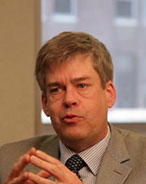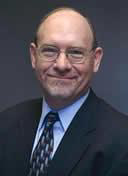Medical Professionals on DFP

“It’s the perfect kind of movement for Parkinson’s disease. A wonderful program.” Matthew Stern, MD, Director, Parkinson’s Disease and Movement Disorders Center, University of Pennsylvania

“Dance for Parkinson’s Disease is more than a possible therapy or treatment…it’s a dose of meaningfulness for these patients. It’s a small jewel that gets them working on something that helps them feel connected.” Jay Baruch, MD Assistant Professor of Emergency Medicine, Alpert Medical School Brown University

“Dance for PD is a hands-down success. It’s one of the most important programs for Parkinson’s disease in the country.” Mary Ellen Thibodeau, RN Executive Director, Connecticut and Rhode Island APDA, Brown University

“Dance therapy has a different effect on patients and in these individuals, it’s extraordinary because it’s sort of a backdoor into therapy. It allows them to have a certain fluidity in theirmovements. They’re improving in balance, they’re improving in their activities of daily living, they’re improving socially and also in their attitude toward their life.” James Young, MD, Rehabilitation Physician, Rush University Medical Center, Chicago, IL

“It’s fascinating to see people who may have walked in slowly and sat down slowly and stood up slowly, and then, when the music comes on, they really just get going. You have to learn a complex series of steps…There are pauses. There are turns. There are points where yougo backwards. There are points where you mirror what your partner is doing. It has the physical component, but I think it also has the cognitive component.” Claire Henchcliffe, MD, Neurologist, Director of the Parkinson’s Institute New York-Presbyterian Hospital/Weill Cornell Medical Center

“It is true that dancing helps PD patients. There have been several studies done on all types of dance including ballroom dancing and tango. I don’t think it matters what type of dancing it is, the main point is people who dance get out and move and exercise and feel better. On the quality of life questionnaire, they report feeling better. Dancing has been shown to reduce pain and stiffness with their PD. It does help; it has been shown in small studies to be positive. It is a great community activity as well. I highly encourage things like that.” Dean Sutherland, MD, PhD, Neurologist Founder and Director Southeastern Center for Parkinson’s Disease/Sarasota Memorial Healthcare System

“Patients with PD can often move more quickly, speak more loudly, and do other things better when their motor systems are activated by cuessuch as music, rhythm, and dance.” Daniel Tarsy, MD, director of the Parkinson’s Disease Center Beth Israel Deaconess Medical Center, Boston, MA

“We know that patients with Parkinson’s do better with external cues. Music provides them with auditory cues. It reminds them to keep stepping. Patients with Parkinson’s have freezing episodes. They cannot take the next step. Dancing, rhythm, is a constant so they don’t freeze. They learn movement strategies. In dance, they practice multitasking. You have to match your steps to rhythm. Plus, it improves endurance, flexibility. It distracts from fatigue. They can exercise 60 to 90 minutes as opposed to 40 in a physical therapy session.” Dr. Aanchal Taneja, MD Physician and movement-disorders specialist, Texas Health Presbyterian Hospital, Dallas, TX

“When I attended medical school in the early 1980s, physical therapy and occupational therapy were the only adjunct modalities recommended for helping patients recover from disease or surgery. At the time, we knew little about art therapy, music therapy, dance and movement therapy, expressive arts therapy, drama therapy, poetry therapy, and a host of other approaches that use one or more arts modality to promote healing. Although many of these therapies originally were intended to improve the emotional health of patients, we are discovering they have other therapeutic benefits.
Museums such as the Museum of Modern Art in New York and the Minneapolis Institute of Arts have programs for patients with Alzheimer’s disease and memory loss that use visual and cognitive stimuli to evoke memories. Dance has been shown to improve the mobility of patients with conditions such as fibromyalgia and Parkinson disease.
For these reasons, physicians should consider the arts among their prescriptive options and advocate for increased availability of arts programming within their institutions.” Gary Christenson, MD, Psychiatrist, Boynton Health Service, University of Minnesota

“To gain these health benefits the people involved [in Dance for PD] didn’t need health insurance or access to a hospital or a physician. They simply needed to move in a way that was fun and engaging. If we really want to do something that has the best chance to improve our health, we need to look beyond healthcare. We can’t do much about the genes that we were given, but there are certainly lots of things we can do about our behavioral choices, and the social circumstances in which we live. Improving the social circumstances for people, and making it easier for people to make healthy choices, is the work of public health.” Edward Ehlinger, MD, MSPH Minnesota Commissioner of Health
